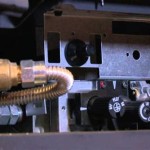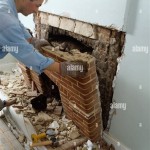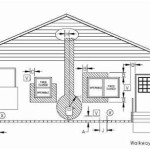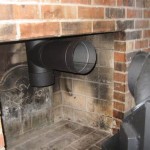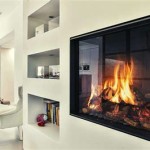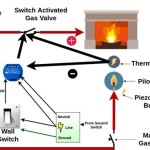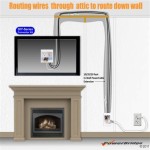Outdoor Vented Wood Burning Fireplace Insert: Enhancing Outdoor Living Spaces
Outdoor living spaces have become increasingly popular, providing homeowners with a retreat to relax, entertain, and connect with nature. A key element in transforming an outdoor area into a comfortable and inviting environment is the addition of a fireplace. While various options exist, an outdoor vented wood-burning fireplace insert offers a unique blend of traditional aesthetics, efficient heating, and safety features. This article will delve into the intricacies of outdoor vented wood-burning fireplace inserts, exploring their benefits, components, installation considerations, maintenance requirements, and key features to consider when selecting the ideal unit.
The Allure of Vented Wood Burning Fireplace Inserts
The appeal of a wood-burning fireplace lies in its ability to create a warm and inviting atmosphere. The crackling of wood, the mesmerizing flames, and the natural aroma contribute to a sensory experience that is unmatched by other heating options. Vented inserts, specifically designed for outdoor use, elevate this experience by incorporating safety features and efficient burning mechanisms. Unlike open-air fire pits, vented inserts direct smoke and combustion byproducts away from the seating area, minimizing exposure to harmful emissions and creating a more comfortable environment for everyone.
Vented fireplaces offer a significant upgrade in terms of safety. The enclosed firebox prevents embers from escaping, reducing the risk of accidental fires, especially in windy conditions. The venting system, typically a chimney or flue, ensures that smoke and carbon monoxide are effectively discharged into the atmosphere. This is particularly important in areas with prevailing winds or where the fireplace is located near structures or vegetation.
Beyond safety, vented inserts provide improved heating efficiency. The enclosed firebox and controlled airflow allow for more complete combustion, extracting more heat from the wood. This results in higher heat output and reduced wood consumption compared to open fire pits. Many modern vented inserts also feature adjustable dampers and air controls, allowing users to fine-tune the burning rate and heat output to suit their specific needs.
Understanding the Components and Functionality
An outdoor vented wood-burning fireplace insert consists of several key components that work together to ensure safe and efficient operation. The primary components include the firebox, venting system, firebrick lining, damper, and door or screen.
The firebox is the main combustion chamber where the wood is burned. It is typically constructed from heavy-gauge steel or cast iron to withstand the high temperatures generated during combustion. The firebox is designed to contain the fire and direct airflow for efficient burning. The size of the firebox determines the maximum wood capacity and the potential heat output of the insert.
The venting system is crucial for removing smoke and combustion byproducts from the fireplace. This system can consist of a traditional chimney or a designated flue pipe. The venting system must be properly sized and installed to ensure adequate draft and prevent backdrafting, which can lead to smoke entering the seating area. The height and diameter of the venting system are critical factors in determining its effectiveness.
The firebrick lining is a layer of heat-resistant bricks that line the interior of the firebox. Firebrick protects the steel or cast iron from the intense heat, extending the life of the firebox. It also helps to radiate heat more evenly, improving the overall heating efficiency of the insert. The quality and thickness of the firebrick lining are important considerations when selecting an insert.
The damper is a movable plate or valve that controls the airflow through the venting system. It can be adjusted to regulate the burning rate and heat output of the fireplace. During initial lighting, the damper is typically opened fully to allow for maximum airflow and establish a strong draft. Once the fire is burning steadily, the damper can be partially closed to reduce airflow and slow down the burning rate. When the fireplace is not in use, the damper should be closed to prevent drafts and heat loss.
A door or screen is typically included with the insert to contain embers and prevent them from escaping the firebox. Doors can be made of glass or metal mesh, providing a view of the flames while maintaining safety. Screens are generally made of metal mesh and offer a more open view of the fire. Both doors and screens can help to prevent sparks and embers from landing on nearby furniture or vegetation.
Installation Considerations and Safety Precautions
The installation of an outdoor vented wood-burning fireplace insert requires careful planning and adherence to safety guidelines. It is highly recommended to consult with a qualified professional to ensure that the installation is performed correctly and meets all local building codes and regulations.
The location of the fireplace is a primary consideration. It should be situated in a safe area, away from flammable materials such as trees, shrubs, and wooden structures. The fireplace should also be located in a well-ventilated area to allow for proper airflow and prevent smoke buildup. It is essential to check local zoning regulations and homeowner association rules regarding outdoor fireplaces before beginning the installation process.
The foundation for the fireplace must be solid and level to ensure stability. A concrete pad is typically used as a foundation, providing a stable base for the insert. The size and thickness of the concrete pad will depend on the size and weight of the fireplace. The foundation must be able to support the weight of the insert and any additional masonry or decorative elements.
The venting system must be properly installed and sized to ensure adequate draft and prevent backdrafting. The venting system should extend high enough above the roofline to clear any obstructions that could interfere with the draft. It is important to use approved venting materials and follow the manufacturer's instructions for installation. Regular inspections of the venting system are recommended to ensure that it is free from obstructions and in good working order.
When installing the insert, it is crucial to follow all safety precautions outlined by the manufacturer. Wear appropriate safety gear, such as gloves and eye protection. Ensure that all electrical connections are properly grounded. Never operate the fireplace without a properly installed venting system. Keep flammable materials away from the fireplace. Have a fire extinguisher readily available in case of emergency.
Maintenance and Care for Longevity
Proper maintenance is essential for ensuring the longevity and safe operation of an outdoor vented wood-burning fireplace insert. Regular cleaning and inspection of the components will help to prevent problems and extend the life of the fireplace.
The most important maintenance task is cleaning the firebox and venting system. Ash should be removed from the firebox regularly to prevent buildup and maintain efficient burning. The venting system should be inspected annually for creosote buildup, which is a flammable substance that can accumulate in the chimney or flue. Creosote buildup can increase the risk of chimney fires, so it is important to have the venting system professionally cleaned if necessary.
Firebrick lining should also be inspected periodically for cracks or damage. Damaged firebrick should be replaced promptly to protect the firebox from excessive heat. The damper should be checked to ensure that it is functioning properly and sealing tightly when closed. Doors and screens should be kept clean and free from rust or corrosion.
The exterior of the fireplace should be cleaned regularly to remove dirt and debris. Use a mild detergent and water to clean the surface of the insert. Avoid using abrasive cleaners, which can damage the finish. Protect the fireplace from the elements by covering it when not in use, especially during periods of heavy rain or snow. Regular maintenance will help to keep the fireplace looking its best and ensure that it is ready for use when needed.
Key Features to Consider When Selecting an Insert
Selecting the right outdoor vented wood-burning fireplace insert requires careful consideration of several key features. These include the size and heat output, venting options, materials and construction, design and aesthetics, and safety features.
The size and heat output of the insert should be appropriate for the size of the outdoor living space. A larger fireplace will generate more heat, but it may also be more expensive to operate. Consider the typical weather conditions in the area and the desired level of warmth when selecting the appropriate size and heat output. BTU (British Thermal Units) is a common measure of heat output for fireplaces.
Venting options vary depending on the design of the fireplace and the location of the outdoor living space. Consider the available space and the desired aesthetic when choosing a venting option. Chimneys are a traditional option, but they require more space and can be more expensive to install. Flue pipes are a more compact option, but they may not be as aesthetically appealing. The venting system must be properly sized and installed to ensure safe and efficient operation.
The materials and construction of the insert will determine its durability and longevity. Inserts constructed from heavy-gauge steel or cast iron will be more durable and resistant to damage. The firebrick lining should be of high quality and properly installed to protect the firebox from excessive heat. The quality of the materials and construction will affect the price of the insert, but it is worth investing in a durable and well-made product.
The design and aesthetics of the insert should complement the style of the outdoor living space. Choose an insert that matches the existing décor and enhances the overall look and feel of the area. Inserts are available in a variety of styles, from traditional to contemporary. Consider the color, shape, and finish of the insert when making a selection.
Safety features are paramount when selecting an outdoor vented wood-burning fireplace insert. Look for inserts that have a properly designed firebox, a secure door or screen, and a reliable venting system. Ensure that the insert meets all relevant safety standards and certifications. Consider purchasing an insert with additional safety features, such as a carbon monoxide detector and a spark arrestor.

Stainless Steel Outdoor Vented Wood Burning Fireplace Insert At Com

Suoy Black Outdoor Direct Vent Wood Burning Fireplace Insert In The Inserts Department At Com

Suoy Black Outdoor Direct Vent Wood Burning Fireplace Insert In The Inserts Department At Com

Superior 50 Inch Outdoor Wood Burning Fireplace Wre4550

Superior 50 Inch Outdoor Wood Fireplace Wre4550 North Country Fire

42 Castlewood Outdoor Wood Burning Fireplace Fine S Gas

Outdoor Lifestyles Gas Burning Fireplace Traditional Refractory Vesper 42

Empire Wildwood Outdoor Log Set York County Natural Gas Authority

Superior Vre4236 36 Outdoor Indoor Firebox White Stacked Fireplaces Usa

Duluth Forge Vent Free Stainless Outdoor Gas Fireplace Insert With Crystal Fire Glass Media 24 000 Btu 170094 The Home Depot
Related Posts

